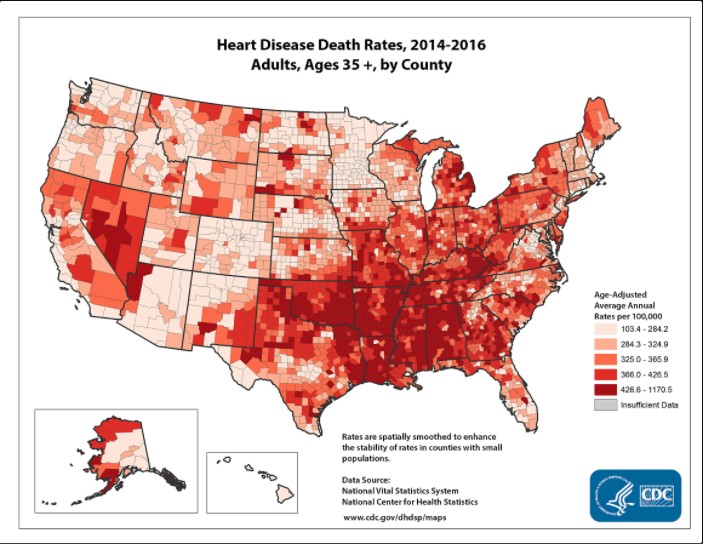
The term “heart disease” refers to several types of heart conditions.
The most common type of heart disease in the United States is
coronary artery disease (CAD), which affects the blood flow to the
heart. Decreased blood flow can cause a heart attack. While most
heart disease are not noticeable at early stage, but they can
indicate a more serious issue. Contact your doctor if you think
you might have one of these heart diseases.
Few Examples are given below:
CORONARY ARTERY DISEASE
Coronary artery disease (CAD) is the most common type
of heart disease in the United States. It is sometimes
called coronary heart disease or ischemic heart disease.
For some people, the first sign of CAD is a heart attack.
You and your health care team may be able to help reduce
your risk for CAD.
Symptoms
Angina, or chest pain and discomfort, is the most common symptom of CAD. Angina can happen when too much plaque builds up inside arteries, causing them to narrow. Narrowed arteries can cause chest pain because they can block blood flow to your heart muscle and the rest of your body. For many people, the first clue that they have CAD is a heart attack. Symptoms of heart attack include:
- Chest pain or discomfort (angina).
- Weakness, light-headedness, nausea (feeling sick to your stomach), or a cold sweat.
- Pain or discomfort in the arms or shoulder and Shortness of breath.
ARRHYTHMIA
An arrhythmia is a problem with the rate or rhythm of the heartbeat.
During an arrhythmia, the heart can beat too fast, too slowly,
or with an irregular rhythm. When a heart beats too fast, the condition
is called tachycardia. When a heart beats too slowly, the condition is called bradycardia.
Symptoms
Heart arrhythmias may not cause any signs or symptoms. A doctor may notice the irregular heartbeat when examining you for another health reason. In general, signs and symptoms of arrhythmias may include:
- A fluttering in the chest.
- A racing heartbeat (tachycardia).
- A slow heartbeat (bradycardia).
- Chest pain and Shortness of breath
HEART VALVE DISEASE
In heart valve disease, one or more of the valves in your heart doesn't work properly.
Your heart has four valves that keep blood flowing in the correct direction.
In some cases, one or more of the valves don't open or close properly. This can cause
the blood flow through your heart to your body to be disrupted.
Your heart valve disease treatment depends on the heart valve affected and the
type and severity of the disease. Sometimes heart valve disease requires surgery to
repair or replace the heart valve.
Symptoms
Some people with heart valve disease might not have symptoms for many years. When signs and symptoms occur, they might include:
- Whooshing sound (heart murmur) when a doctor is listening to the heart with a stethoscope.
- Chest pain.
- Abdominal swelling (more common with advanced tricuspid regurgitation).
- Shortness of breath, particularly when active or lying down.
- Swelling of your ankles and feet.
- Dizziness, Fainting and Irregular heartbeat.
T R E A T M E N T
- National Heart Institute
Address: 49 50 Community Center, East of Kailash, New Delhi, Delhi 110065
Phone: 01146600700
Appointments: https://www.nationalheartinstitute.com - Delhi Heart Hospital
Address: 176, Bhartendu Harish Chandra Marg, Jagriti Enclave, Anand Vihar, Delhi, 110092
Phone: 09810671111
Appointments: https://delhihearthospital.org - Fortis Escorts Heart Institute
Address: Okhla road, Sukhdev Vihar Metro Station, New Delhi, Delhi 110025 Phone: 01147135000
Appointments: https://www.fortisescorts.in